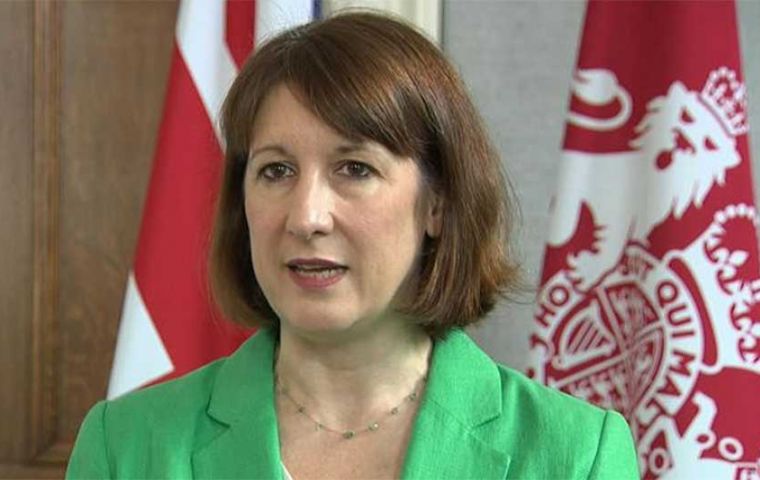MercoPress. South Atlantic News Agency
Stubborn inflation in UK, 3.8% in twelve months to July with air fares, fuel and food prices leading
 The Bank of England inflation target is 2%. Chancellor Rachel Reeves said that “there was more to do to ease the cost of living”.
The Bank of England inflation target is 2%. Chancellor Rachel Reeves said that “there was more to do to ease the cost of living”. The U.K.’s annual inflation rate was higher than expected at 3.8% in July, according to data released by the Office for National Statistics (ONS) on Wednesday. Most economists had anticipated inflation would reach 3.7% in the twelve months to July, after it picked up to 3.6% in June, exceeding forecasts.
July core inflation, which excludes more volatile energy, food, alcohol and tobacco prices, rose by an annual 3.8%, up from 3.7% in the twelve months to June.
The rise in inflation pushed the consumer price index to its highest annual rate since the beginning of last year with the main driver the increase in air fares, as well as the price of petrol and diesel. Food price inflation continues to climb, with items such as coffee, fresh orange juice, meat and chocolate seeing the biggest rises.
U.K. Chancellor Rachel Reeves responded on Wednesday that there was more to do to ease the cost of living. “We have taken the decisions needed to stabilize the public finances, and we’re a long way from the double-digit inflation we saw under the previous government, but there’s more to do,” she said in emailed comments.
The British pound on Wednesday was largely steady against the dollar following the data release, trading at US$1.3489.
Services inflation gained to 5% in July from 4.7% in the previous month. The print is seen as another obstacle in the Bank of England’s attempts to tame inflation, analysts say, as service-focused businesses raise prices to cover the costs of rising wages and the recent hike to National Insurance contributions.
The higher July reading also diminishes the chance of any further interest rate cut by the Bank of England this year.
The latest data comes after the Bank of England earlier in the month voted by a slim margin to cut interest rates from 4,25% to 4%, as the central bank resumed what it describes as a “gradual and careful” approach to monetary easing.
While the BOE was widely expected to trim rates by 25 basis points at the time, traders and economists were keen to see the breakdown of support for the move. In the end, policymakers had to vote twice on the rate cut decision, and a majority of 5-4 opted to cut.
BOE policy committee members have had to weigh up sticky inflation with a cooling jobs market and lackluster but slightly recovering growth. GDP data out last week showed a surprise 0.3% expansion in the second quarter.
The BOE is watching inflation data closely, after forecasting the consumer price index reaching 4%, before retreating in the early half of 2026.




Top Comments
Disclaimer & comment rulesCommenting for this story is now closed.
If you have a Facebook account, become a fan and comment on our Facebook Page!